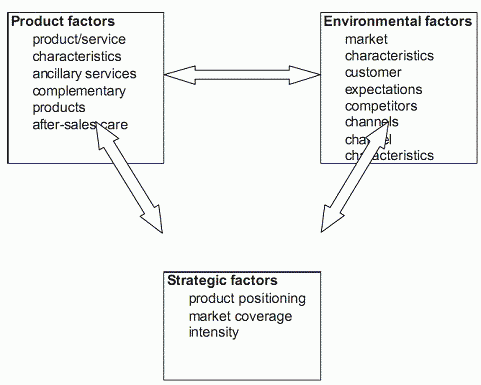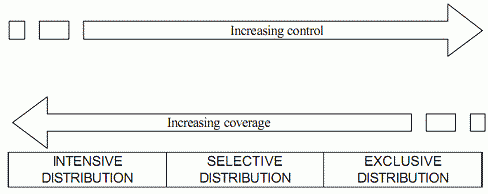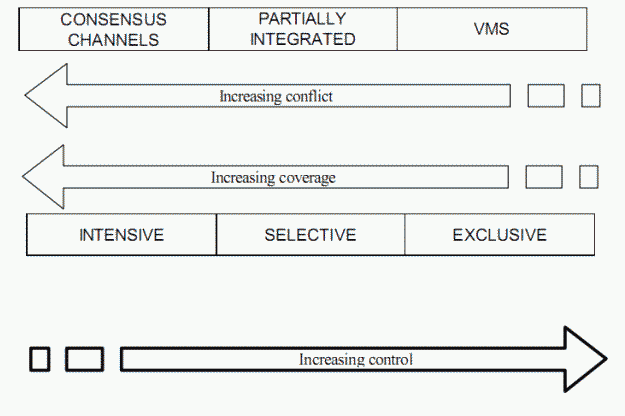Factors to Consider in Designing Marketing Channels. Strategic Factors
Category: Marketing
The three sets of factors illustrated in the figure below have to be evaluated simultaneously when designing marketing channels. All three sets interact and so the design process is necessarily interactive.
Strategic Factors
Product positioning is so fundamental to marketing strategy that it naturally occurs as a basic element in channel design. Its influence is related to how the positioning is defined. If the positioning emphasises a product or service feature then the channel chosen would have to support and perhaps enhance that position. Claims such as ‘instant access’ ‘guaranteed freshness’ ‘the full service company’, ‘the one with the widest product line’, ‘top technical back up’, or ‘buy with confidence — life time care warranty’, all impose strictures on channel options if they are to be credible. If the positioning is related to particular users or use occasions then again the channel choice needs to be consonant. If the position taken relies upon competitive positioning head on or side step it must be influenced by the channel choices of competitors. With head on competitive positioning it would follow that channel design mirrors that of the competitors. With side step competitive positioning a deliberate decision to employ distinctive channels might be more supportive.
Intensity of market coverage intended by the firm will be one of the outcomes of the product positioning strategy. This intensity is dependent upon the decision made about product or service availability to buyers Intensive coverage implies numerous outlets or service points. Selective coverage implies far fewer and this might be taken as far as implying an exclusive franchise for one outlet or service point in an area or region. To reinforce a high quality image the firm may decide to restrict availability. Rolls Royce or BMW cars cannot be bought at just any car showroom. Ercol, G-Plan or Nathan furniture is only available at restricted outlets though frequently together. Many expensive kinds or clothing or jewellery are similarly restricted. The opposite approach is apparent for goods and services with a high purchase frequency, which people wish to buy with minimum effort such as groceries or petrol or fast food. An important consideration in this decision is the trade-off between market exposure and control over the channel. Wide availability in numerous outlets reduces the seller’s control but restricted availability limits potential sales.
This trade off between exposure and control is illustrated in the figure below:
Remember as well that the extent to which the channel is integrated vertically, also determines the degree of market control available.
Thus two important strategic considerations impacting upon overall channel
control are:
— Degree of vertical integration
— Intensity of exposure
See the figure below:



